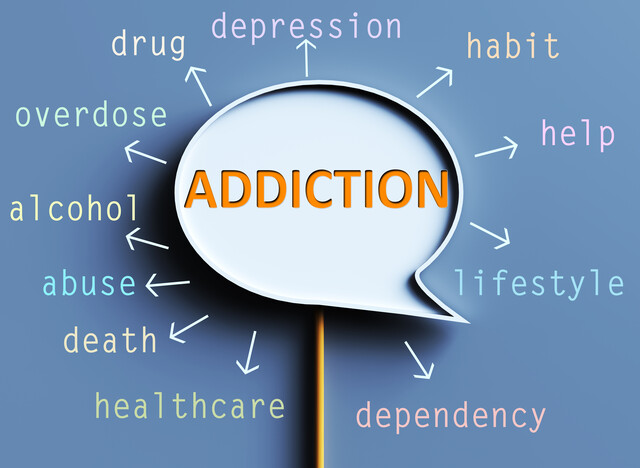Online Class: Workplace Drug Use - An HR Guide

-
15Lessons
-
37Exams &
Assignments -
3Hours
average time -
0.3CEUs
Course Description
Substance Abuse & The Workplace: Understanding, Addressing, and Rising Above
Substance abuse – a silent, persistent, and ever-encroaching shadow – doesn't discriminate. In its relentless grip, millions find themselves ensnared, battling not just addiction but its cascading ripple effects that touch every aspect of their lives and the lives of those around them. It's not just a personal battle; the very fabric of our society, including our workplaces, is stained by its impact. With the United States grappling with the profound dimensions of this epidemic, understanding its intricacies becomes not just important, but imperative.
Think of the modern workplace – a bustling hub of productivity, creativity, and collaboration. But lurking beneath the surface is an often overlooked reality: substance abuse. Whether it's the high-performing executive seeking solace in narcotics or the diligent worker battling personal challenges, no one is immune. This course, designed with meticulous attention, aims to shed light on this silent plague.
Delve into a comprehensive journey:
-
Unmasking the Enemy: Decode the myriad types of addictive substances, from the seemingly benign to the overtly destructive. Understand their physiological, psychological, and social repercussions.
-
Historical and Legal Context: Traverse the history of addiction and gain insights into the legal maze surrounding various substances. How did we get here?
-
Recognizing the Subtle Signs: Arm yourself with the ability to discern the often subtle yet critical warning signs of abuse – a skill invaluable in the workplace and beyond.
-
Beyond Identification - Intervention: Dive deep into strategies for workplaces, from formulating ironclad policies to launching rehabilitation and support programs.
-
Empowerment Through Awareness: Equip yourself with tools and knowledge not just to respond but to proactively address and mitigate the challenges posed by substance abuse.
Envision a world where workplaces aren't just centers of professional growth, but sanctuaries of well-being. This course is more than an educational endeavor; it's a call to action, a step towards creating safer, healthier, and more supportive work environments. Whether you're an employer, an HR professional, or a concerned colleague, by the end of this course, you'll be equipped with the knowledge and tools to make a tangible difference.
Join us on this transformative journey. The battle against substance abuse begins with awareness, and awareness starts here. Let's rise above, together.
Course Lessons
Lesson 1. Understanding Employee Substance Abuse and Its Implications
 Lesson 1 Video
Lesson 1 Video Review Practice Worksheet: Lesson-1-WordSearch-15413.pdf
Review Practice Worksheet: Lesson-1-WordSearch-15413.pdf Lesson discussions: Reasons for Taking this Course
Lesson discussions: Reasons for Taking this Course Assessment: Lesson 1 Quiz
Assessment: Lesson 1 Quiz Assessment: Lesson 1 Review Exam
Assessment: Lesson 1 Review Exam
Lesson 2. Understanding Substance Abuse: Past Lessons and Future Challenges
 Lesson 2 Video
Lesson 2 Video Review Practice Worksheet: Lesson-2-Downloadable-15416.pdf
Review Practice Worksheet: Lesson-2-Downloadable-15416.pdf Complete: Lesson 2 Activity
Complete: Lesson 2 Activity Assessment: Lesson 2 Quiz
Assessment: Lesson 2 Quiz Assessment: Lesson 2 Review Exam
Assessment: Lesson 2 Review Exam
Lesson 3. Opioid Crisis Explored: Causes, Effects, and Future Directions
 Lesson 3 Video
Lesson 3 Video Review Practice Worksheet: Lesson-3-WordSearch-15420.pdf
Review Practice Worksheet: Lesson-3-WordSearch-15420.pdf Complete: Lesson 3 Activity
Complete: Lesson 3 Activity Assessment: Lesson 3 Quiz
Assessment: Lesson 3 Quiz Assessment: Lesson 3 Review Exam
Assessment: Lesson 3 Review Exam
Lesson 4. The Dynamics of Stimulants: From Medical Use to Misuse
 Lesson 4 Video
Lesson 4 Video Review Practice Worksheet: Lesson-4-WorkSheet-15423.pdf
Review Practice Worksheet: Lesson-4-WorkSheet-15423.pdf Complete: Lesson 4 Activity
Complete: Lesson 4 Activity Assessment: Lesson 4 Quiz
Assessment: Lesson 4 Quiz Assessment: Lesson 4 Review Exam
Assessment: Lesson 4 Review Exam
Lesson 5. Depressants Unveiled: The Balance Between Benefit and Risk
 Lesson 5 Video
Lesson 5 Video Review Practice Worksheet: Lesson-5-HomeWork-15426.pdf
Review Practice Worksheet: Lesson-5-HomeWork-15426.pdf Assessment: Lesson 5 Quiz
Assessment: Lesson 5 Quiz Assessment: Lesson 5 Review Exam
Assessment: Lesson 5 Review Exam
Lesson 6. Beyond Reality: The Intriguing World of Hallucinogens
 Lesson 6 Video
Lesson 6 Video Review Practice Worksheet: Lesson-6-WordSearch-15430.pdf
Review Practice Worksheet: Lesson-6-WordSearch-15430.pdf Assessment: Lesson 6 Quiz
Assessment: Lesson 6 Quiz Assessment: Lesson 6 Review Exam
Assessment: Lesson 6 Review Exam
Lesson 7. Workplace Alcoholism: Signs, Impacts, and Solutions
 Lesson 7 Video
Lesson 7 Video Review Practice Worksheet: Lesson-7-WordSearch-15433.pdf
Review Practice Worksheet: Lesson-7-WordSearch-15433.pdf Complete: Lesson 7 Activity
Complete: Lesson 7 Activity Assessment: Lesson 7 Quiz
Assessment: Lesson 7 Quiz Assessment: Lesson 7 Review Exam
Assessment: Lesson 7 Review Exam
Lesson 8. The Multifaceted Nature of Addiction: Exploring Its Diverse Causes
 Lesson 8 Video
Lesson 8 Video Review Practice Worksheet: Lesson-8-WordSearch-15437.pdf
Review Practice Worksheet: Lesson-8-WordSearch-15437.pdf Complete: Lesson 8 Activity
Complete: Lesson 8 Activity Assessment: Lesson 8 Quiz
Assessment: Lesson 8 Quiz Assessment: Lesson 8 Review Exam
Assessment: Lesson 8 Review Exam
Lesson 9. Navigating the Complexities of Substance Abuse at Work
 Lesson 9 Video
Lesson 9 Video Review Practice Worksheet: Lesson-9-Downloadable-15440.pdf
Review Practice Worksheet: Lesson-9-Downloadable-15440.pdf Assessment: Lesson 9 Quiz
Assessment: Lesson 9 Quiz Assessment: Lesson 9 Review Exam
Assessment: Lesson 9 Review Exam
Lesson 10. Navigating the Legal Complexities of Workplace Substance Issues
 Lesson 10 Video
Lesson 10 Video Review Practice Worksheet: Lesson-10-WordSearch-15444.pdf
Review Practice Worksheet: Lesson-10-WordSearch-15444.pdf Assessment: Lesson 10 Quiz
Assessment: Lesson 10 Quiz Assessment: Lesson 10 Review Exam
Assessment: Lesson 10 Review Exam
Lesson 11. Workplace Drug Testing: Methods and Controversies
 Lesson 11 Video
Lesson 11 Video Review Practice Worksheet: Lesson-11-WordSearch-15447.pdf
Review Practice Worksheet: Lesson-11-WordSearch-15447.pdf Assessment: Lesson 11 Quiz
Assessment: Lesson 11 Quiz Assessment: Lesson 11 Review Exam
Assessment: Lesson 11 Review Exam
Lesson 12. Unlocking Potential: The Role of EAPs in Modern Workplaces
 Lesson 12 Video
Lesson 12 Video Review Practice Worksheet: Lesson-12-HomeWork-15451.pdf
Review Practice Worksheet: Lesson-12-HomeWork-15451.pdf Complete: Lesson 12 Activity
Complete: Lesson 12 Activity Assessment: Lesson 12 Quiz
Assessment: Lesson 12 Quiz Assessment: Lesson 12 Review Exam
Assessment: Lesson 12 Review Exam
Lesson 13. Workplace Substance Abuse: Influencing Factors and Solutions
 Lesson 13 Video
Lesson 13 Video Review Practice Worksheet: Lesson-13-HomeWork-15454.pdf
Review Practice Worksheet: Lesson-13-HomeWork-15454.pdf Assessment: Lesson 13 Quiz
Assessment: Lesson 13 Quiz Assessment: Lesson 13 Review Exam
Assessment: Lesson 13 Review Exam
Lesson 14. The Workplace Journey of Employees in Recovery
 Lesson 14 Video
Lesson 14 Video Review Practice Worksheet: Lesson-14-WordSearch-15457.pdf
Review Practice Worksheet: Lesson-14-WordSearch-15457.pdf Assessment: Lesson 14 Quiz
Assessment: Lesson 14 Quiz Assessment: Lesson 14 Review Exam
Assessment: Lesson 14 Review Exam
Lesson 15. Building a Supportive Culture Against Drug Abuse
 Lesson 15 Video
Lesson 15 Video Review Practice Worksheet: Lesson-15-Downloadable-15461.pdf
Review Practice Worksheet: Lesson-15-Downloadable-15461.pdf Lesson discussions: End of Course Poll; Course Comments; Reasons for Taking this Course
Lesson discussions: End of Course Poll; Course Comments; Reasons for Taking this Course Assessment: Lesson 15 Quiz
Assessment: Lesson 15 Quiz Assessment: The Final Exam
Assessment: The Final Exam Assessment: Lesson 15 Review Exam
Assessment: Lesson 15 Review Exam
Learning Outcomes
- Demonstrate understanding of substance abuse by identifying signs and symptoms of addiction in the workplace.
- Differentiate between common myths and facts about substance abuse using examples from the course material.
- Define the historical context of substance abuse and its evolution in societal norms and legal frameworks.
- Identify and classify substances based on their schedule, understanding their legal implications and potential risks for abuse and dependence.
- Analyze the impact of narcotics abuse on individuals and create a recovery plan addressing treatment options and support systems available for users.
- Define narcotics and identify their legal and illegal forms, including signs of their abuse and short- and long-term effects on users.
- Describe the process and challenges involved in the treatment and recovery from stimulant addiction, emphasizing the importance of professional assistance.
- Recognize the symptoms of stimulant abuse, including increased heart rate and unusual behavior, and understand their potential short- and long-term side effects.
- Define the primary characteristics of depressants, including their medical and non-medical usage, with 90% accuracy in identification.
- Describe three short-term and three long-term effects of depressant usage, demonstrating understanding by providing specific examples from the lesson.
- Identify and describe at least three types of hallucinogens and their origins, distinguishing between natural and synthetic forms.
- List and explain the short-term and long-term effects of hallucinogen use on physical and psychological health, using specific examples from the lesson.
- Define the signs of alcohol abuse in the workplace by identifying behavioral, physical, and emotional indicators within a given scenario.
- Demonstrate mastery of lesson content at levels of 70% or higher.
Additional Course Information

- Document Your Lifelong Learning Achievements
- Earn an Official Certificate Documenting Course Hours and CEUs
- Verify Your Certificate with a Unique Serial Number Online
- View and Share Your Certificate Online or Download/Print as PDF
- Display Your Certificate on Your Resume and Promote Your Achievements Using Social Media

Student Testimonials
- "It was very helpful. Learned many things as far as how much help there is out there and just the different things with drugs and alcohol abuse as far as legal things, assistance, how to help someone, how to know if someone is using." -- Jesse G.
- "Very good content and covered a broad of topics relevant to employee substance use." -- Mike L.
- "It was quite informative." -- Patricia T.
Related Courses
-
 5 hours
0.5 CEUs
Positive Parenting Techniques
+ More Info
5 hours
0.5 CEUs
Positive Parenting Techniques
+ More Info
-
 8 hours
0.8 CEUs
Procurement Management
+ More Info
8 hours
0.8 CEUs
Procurement Management
+ More Info
-
 8 hours
0.8 CEUs
Strategic Planning
+ More Info
8 hours
0.8 CEUs
Strategic Planning
+ More Info
-
 5 hours
0.5 CEUs
Basic Research Skills
+ More Info
5 hours
0.5 CEUs
Basic Research Skills
+ More Info
-
 3 hours
0.3 CEUs
Empowerment for Single Parents
+ More Info
3 hours
0.3 CEUs
Empowerment for Single Parents
+ More Info
-
 5 hours
0.5 CEUs
Anger Management Techniques
+ More Info
5 hours
0.5 CEUs
Anger Management Techniques
+ More Info
-
 3 hours
0.3 CEUs
HR Compensation and Benefits
+ More Info
3 hours
0.3 CEUs
HR Compensation and Benefits
+ More Info
-
 6 hours
0.6 CEUs
Delegation Skills
+ More Info
6 hours
0.6 CEUs
Delegation Skills
+ More Info
-
 5 hours
0.5 CEUs
Creative Thinking Skills
+ More Info
5 hours
0.5 CEUs
Creative Thinking Skills
+ More Info
-
 7 hours
0.7 CEUs
Attention Deficit Disorders: ADD and ADHD
+ More Info
7 hours
0.7 CEUs
Attention Deficit Disorders: ADD and ADHD
+ More Info
-
 5 hours
0.5 CEUs
Workplace Safety
+ More Info
5 hours
0.5 CEUs
Workplace Safety
+ More Info
-
 9 hours
0.9 CEUs
Emotional and Behavioral Disorders
+ More Info
9 hours
0.9 CEUs
Emotional and Behavioral Disorders
+ More Info
-
 7 hours
0.7 CEUs
Innovative Thinking Skills
+ More Info
7 hours
0.7 CEUs
Innovative Thinking Skills
+ More Info
-
 8 hours
0.8 CEUs
Human Resources Management
+ More Info
8 hours
0.8 CEUs
Human Resources Management
+ More Info
-
 8 hours
0.8 CEUs
Medical Office Management
+ More Info
8 hours
0.8 CEUs
Medical Office Management
+ More Info
-
 5 hours
0.5 CEUs
Critical Thinking Skills
+ More Info
5 hours
0.5 CEUs
Critical Thinking Skills
+ More Info
-
 4 hours
0.4 CEUs
Stress Management
+ More Info
4 hours
0.4 CEUs
Stress Management
+ More Info
-
 6 hours
0.6 CEUs
Management Essentials
+ More Info
6 hours
0.6 CEUs
Management Essentials
+ More Info
-
 10 hours
1.0 CEUs
Mastering Sales Skills 101
+ More Info
10 hours
1.0 CEUs
Mastering Sales Skills 101
+ More Info
-
 4 hours
0.4 CEUs
Resolving Workplace Conflict
+ More Info
4 hours
0.4 CEUs
Resolving Workplace Conflict
+ More Info
-
 17 hours
1.7 CEUs
Medical Terminology 201
+ More Info
17 hours
1.7 CEUs
Medical Terminology 201
+ More Info
-
 8 hours
0.8 CEUs
Decision Making Skills
+ More Info
8 hours
0.8 CEUs
Decision Making Skills
+ More Info
-
 7 hours
0.7 CEUs
Collaboration Skills
+ More Info
7 hours
0.7 CEUs
Collaboration Skills
+ More Info
-
 6 hours
0.6 CEUs
Workplace Violence: A Guide to Responding and Preventing
+ More Info
6 hours
0.6 CEUs
Workplace Violence: A Guide to Responding and Preventing
+ More Info
-
 9 hours
0.9 CEUs
Autism Spectrum Disorders for Teachers
+ More Info
9 hours
0.9 CEUs
Autism Spectrum Disorders for Teachers
+ More Info
-
 7 hours
0.7 CEUs
Understanding Drug and Alcohol Abuse
+ More Info
7 hours
0.7 CEUs
Understanding Drug and Alcohol Abuse
+ More Info
-
 7 hours
0.7 CEUs
Leadership Skills for Managers
+ More Info
7 hours
0.7 CEUs
Leadership Skills for Managers
+ More Info
-
 5 hours
0.5 CEUs
Understanding Workers' Compensation
+ More Info
5 hours
0.5 CEUs
Understanding Workers' Compensation
+ More Info
-
 5 hours
0.5 CEUs
Lawful Employee Termination
+ More Info
5 hours
0.5 CEUs
Lawful Employee Termination
+ More Info






